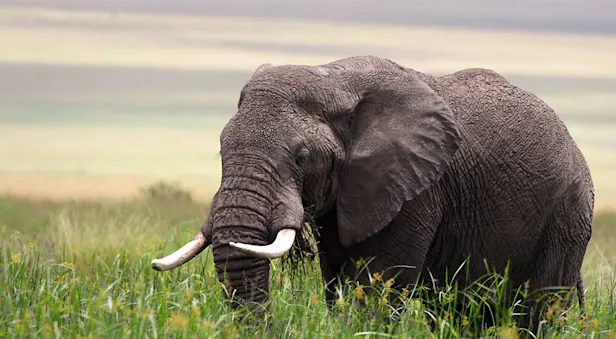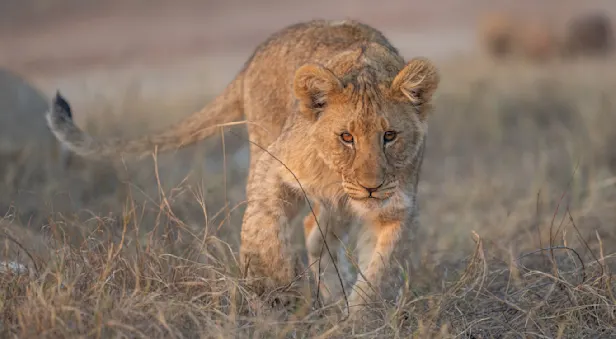
Know Before You Go


Botswana Temperature & Rainfall by Month
Winter/Dry Season
The climate in Botswana is semi-arid. During the dry winter months of April through early September, the days are warm, but the nights and early mornings can be very cold (sometimes even near or below freezing)! We will provide cozy comforters to keep you warm during your stay.
Many travelers assume that because they are traveling to Africa, it must always be warm. This is not the case during Botswana’s winter, however, particularly in June, July and August. You can expect days to be absolutely beautiful, temperate and sunny, but nights and early mornings will be chilly, possibly near freezing, so we recommend you bring warm layers you can peel off as it warms up through the day. A lightweight down jacket or fleece pullover is ideal. Gloves, hat, scarf and warm long pants are also essential at this time of year for early-morning wildlife drives.
Summer/Green Season
Mid- to late September through April is a much warmer period. Late October is generally the hottest time of the year, with temperatures often reaching into the 100s° F. During the green season, rainfall tends to be erratic, unpredictable and highly regional. Frequently, a heavy downpour may occur in one area, while a few miles away, there is no rain at all. Showers are often followed by intense sun; thus, much of the rainfall does not penetrate the ground but instead is lost to evaporation and transpiration. In the morning during the summer months, humidity ranges from 60 to 80 percent and drops to between 30 and 40 percent by afternoon.
Average Monthly Temperatures & Rainfall:
(In Fahrenheit and inches)
Linyanti Reserve

Okavango Delta

Central Kalahari

Please keep in mind that these are averages, and that weather can be unpredictable. Be sure to check current weather conditions a few days before your departure at: www.weather.com. Remember to check the weather for each location on your itinerary, as conditions may vary.
Botswana Monthly Weather Information and Recommendations
January
January is the middle of the green season in Botswana. With the exception of the Okavango Delta and eastern part of the country, Botswana consists almost entirely of the Kalahari Desert, and thus rainfall is low. Phrases like “rainy season” or “afternoon thundershowers” therefore need to be taken in context. Rain typically falls in short thundershowers in the late afternoon and can produce spectacular dark clouds and vivid rainbows before the skies clear again. Daytime temperatures can reach into the upper 80s or low 90s F, so be prepared with short-sleeved shirts and shorts or zip-off pants in addition to a lightweight “breathable” waterproof rain jacket and rain pants.
February
February is a continuation of the green season with warm sunny days in the upper 80s or low 90s F and brief afternoon rain showers. Given Botswana’s semi-arid climate, even during the green season rainfall tends to be erratic, unpredictable and highly regional. Frequently, a heavy downpour may occur in one area while just a few miles away there is no rain at all. Showers are often followed by intense sun; thus, much of the rainfall does not penetrate the ground but instead is lost to evaporation and transpiration. In the morning during the summer months, humidity ranges from 60 to 80 percent and drops to between 30 and 40 percent by afternoon. Travelers should be prepared with short-sleeved shirts and shorts or zip-off pants in addition to a lightweight “breathable” waterproof rain jacket and rain pants.
March
During the last month of the green season, the weather is much the same as in January and February.
April
As the green season comes to an end, rainfall occurs in much the same pattern as it does from December through March, but the amount is greatly reduced. Temperatures in April start to cool off, reaching the low to upper 80s F during the day and dipping to the 50s to low 60s F at night. We still recommend that you bring a lightweight “breathable” waterproof rain jacket and rain pants, although the amount of time you may use them is unpredictable and will depend on weather at the moment.
May
May usually marks the beginning of the dry winter season in Botswana. Rain is less likely. The nights start to cool down, with temperatures typically in the 40s and 50s F. You will want a fleece pullover or warm sweater once the sun goes down, and you may also want a warm hat, gloves and scarf for nights and early mornings. Daytime temperatures continue to cool down and are usually in the upper 70s to mid-80s F, so you will want warm layers on morning wildlife drives that you can peel off as it warms up later in the day. Zip-off pants are a versatile option.
June
Because there is typically no cloud cover, winter nights in Botswana can be exceptionally cold. June tends to be the coldest month, with nighttime and early morning temperatures dipping into the 30s F at times. Frost is common, and you will want the same cold-weather clothing you would wear on a mild winter day in cooler parts of the U.S. A windproof jacket layered over a fleece and a heavy shirt or sweater along with hat, gloves and scarf will be necessary on early-morning wildlife drives. Temperatures warm up during the day, however, and can be surprisingly warm, reaching the 70s and low 80s F. Shorts may not be necessary, although zip-off pants are a good choice. You will want a lightweight short-sleeved shirt to wear during the warmest part of the day.
July
In July, travelers can expect winter temperatures in Botswana, dipping into the low 40s F at night, so a windproof jacket, fleece and long pants are a must. On early-morning wildlife drives, travelers can expect temperatures as low as 40 degrees F, so wear a hat, gloves and a scarf. Daytime temperatures are usually in the upper 70s F with sunshine, so zip-off pants could be useful, and you will want layers you can peel off as the temperatures rise throughout the day.
August
August brings an end to winter in Botswana. Temperatures warm up slightly and can reach the low 80s F during the day. They can still dip below freezing at night and in the early mornings, however, so we recommend a windproof jacket, fleece and long pants along with a warm hat, gloves and a scarf. Short-sleeved shirts and shorts or zip-off pants are recommended for the warmer mid-day temperatures that can reach into the mid-80s F.
September
September is one of the hottest months in Botswana and is typically dry and dusty. Temperatures during the day can reach the mid-90s F. You may still want a fleece or light jacket in the early mornings, but be sure you are prepared for intense sun during the day with plenty of sunscreen, a sun hat with a brim, and a lightweight long-sleeved shirt to protect your arms. We also recommend a bandana or buff to cover your mouth and nose in case it is especially dusty.
October
Late October is generally the hottest time of the year in Botswana, with temperatures often reaching into the low 100s F. You may still want a fleece or light jacket in the early mornings, but you should be prepared for intense sun with plenty of sunscreen, a sun hat with a brim, and a lightweight long-sleeved shirt to protect your arms, as well as a bandana or scarf to protect your mouth and nose from the dust.
November
November brings the end of the dry season, but it can still be very hot with daytime temperatures in the 90s F. The green season usually begins in November, though the extent of rainfall may differ from year to year, and this will in turn affect the temperature. You will want a fleece or light jacket in the early mornings, along with layers that you can peel off as it warms up throughout the day.
December
December is generally considered the full-fledged start of the green season in Botswana. Temperatures are still hot and can reach the upper 90s F, with afternoon thunderstorms. Travelers should be prepared with plenty of sunscreen, a sun hat with a brim, and a lightweight long-sleeved shirt to protect your arms. A lightweight, “breathable” waterproof rain jacket and rain pants are also suggested for possible afternoon showers.
Header Credit: David Luck

































